If you're not familiar with acrylic splashbacks then now is the perfect time to find out more.
Acrylic Splashbacks are certainly not as common as tiles or glass.
However they are becoming increasingly popular for use in both homes and commercial projects.
Many architects, builders and designers are trying them for the first time and becoming devoted fans.
However they are not as common as tiles or glass, and many industry professionals have a number of questions about them.
Below I have listed many of the most commonly asked questions and our answers to them.
Have a look below and see if your questions are here. These questions and answers will give you a clear idea of whether acrylic splashbacks and wall panel are suitable for your project(s).
Q) Where can I use acrylic splashbacks and wall panels?
A) Virtually any vertical surface including wet areas.
Acrylic splashbacks are commonly used anywhere tiles or glass splashbacks are used. This includes kitchens, showers, bathroom and laundries.
They are also commonly used in commercial projects for medical consulting rooms, wash stations, decorative panels, in schools, laboratories and as an alternative to whiteboards.
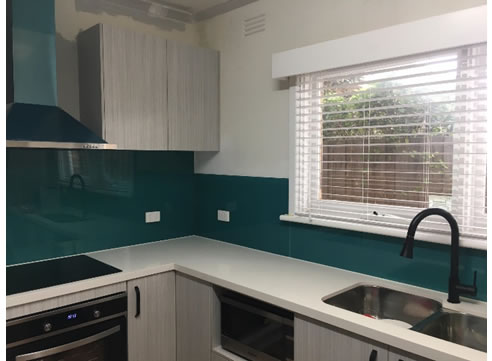
Acrylic splashbacks in kitchen
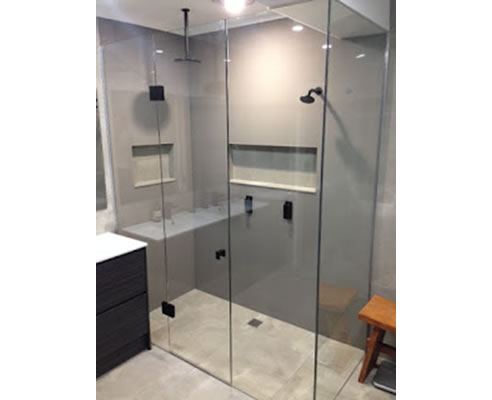
Custom colour and size acrylic splashbacks on shower walls
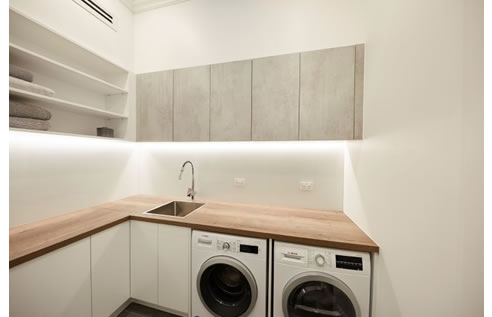
Innovative Splashbacks® used in Sticks & Wombat - The Block 2017 - winning 10/10 Laundry
Q) Can acrylic be used behind a gas cooktop?

By Australian law acrylic can be used behind a gas cooktop as long as there is a 200mm clearance from the outside of the rear burner.
Distance requirements are sensible for glass too since heat can impact paint on the rear of any surface.
If this is not possible then you can use a stainless steel insert or glass panel. Or use a 150mm high upright with the acrylic splashback cut to shape around the upright.
For electric and induction cooktops a 50mm clearance from the outside back edge of the cooktop is required.
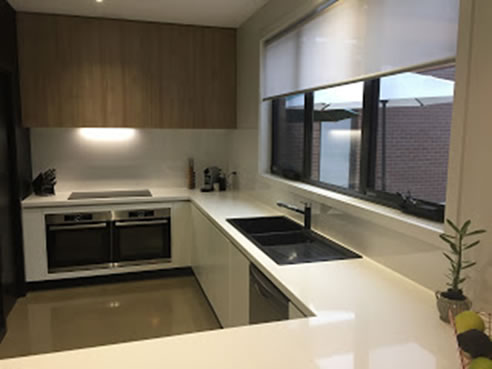
Q) Does acrylic scratch?
A) Yes, acrylic can scratch. However most surfaces including glass scratch.
If you were to scratch acrylic you would also scratch glass by doing the same thing. A scratch in glass may not be as deep, however it would be permanent and noticeable.
Unlike glass however, acrylic can be easily repaired.
In the past 8 years the only request we have ever had for a repair was a display panel in a showroom which was deliberately scratched by a sharp instrument. And it was repaired perfectly.
The reality is, a shower or at the back of a kitchen bench are not areas which are commonly scratched.
Q) How large are the panels?
The maximum sheet size for Innovative Splashbacks is 2030mm x 3050mm.
However, what's important with Innovative Splashbacks is they are supplied cut-to-size and shape for your project.
Traditionally acrylic splashbacks have been sold in set-sized panels. And this means paying for what you use and for what you don't plus excess wastage.
A recent comparison of our cut to size panels and an alternative supplier supplying full panels found Innovative Splashbacks cost 22% less.
There is also an extra saving on site as well since no time is spent cutting panels, making them fast to install and extremely cost effective.
Q) What options are there for finishes and colours?
There are two main types of finishes. The first is painted, which includes solid, metallic and pearlescent colours. We paint the rear of our acrylic splashbacks, exactly like glass splashbacks.
Also you are not restricted to colours, as we can match any paint or Pantone colour your project requires. We can also match physical swatch sample of tiles, carpet or anything else clients request.
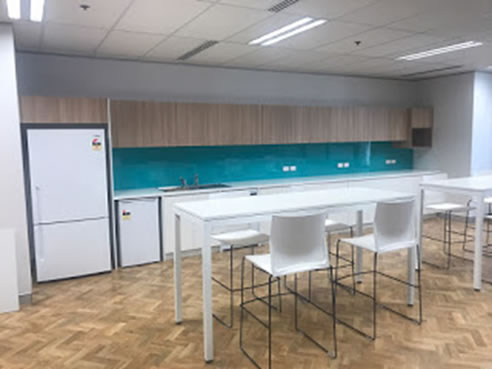
The second is high definition digital prints using a state-of-the-art print process.
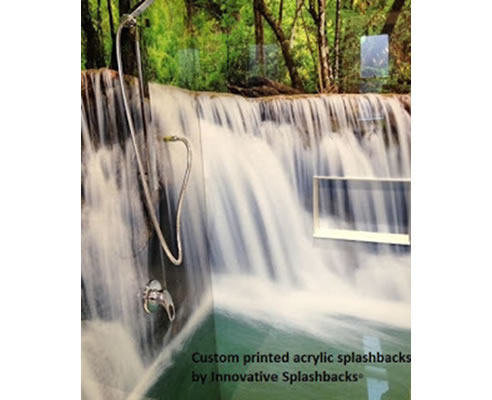
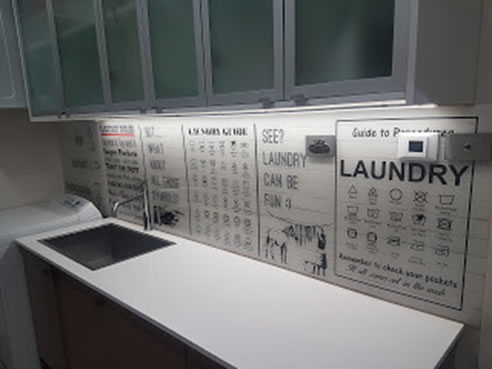
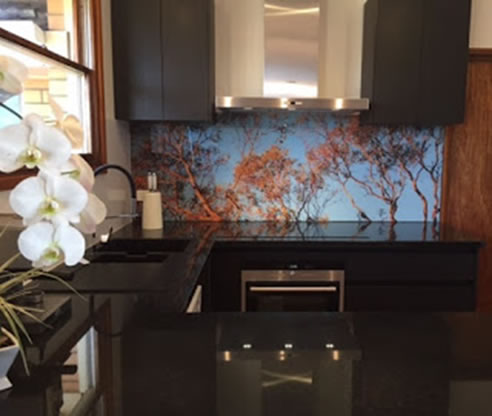
Find out more
The best place to find out more is at www.innovativesplashbacks.com.au
You can also see our latest projects at www.facebook.com/InnovativeSplashbacks
Or you can call Elli directly on 0418 548 743.
Quotes and samples are available upon request, and we welcome any questions you have.
© 2017 Innovative Splashbacks Pty Ltd. All rights reserved.
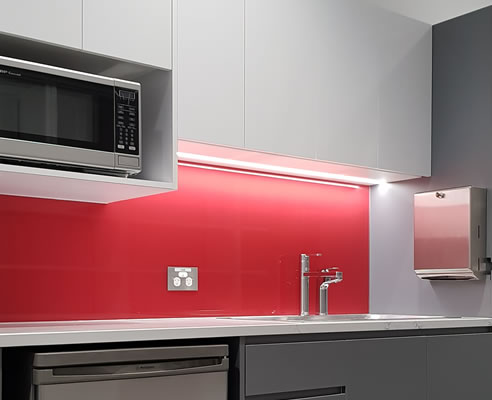


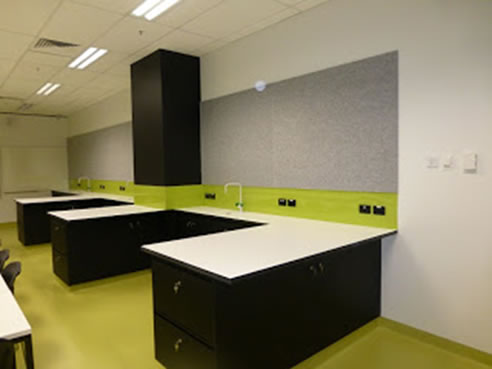












 Cut-To-Size Digitally Printed and
Cut-To-Size Digitally Printed and Printed and Painted Acrylic Splashback
Printed and Painted Acrylic Splashback White and Colour Matched Commercial
White and Colour Matched Commercial Coloured and Printed Acrylic Splashbacks
Coloured and Printed Acrylic Splashbacks Acrylic Splashbacks for Commercial
Acrylic Splashbacks for Commercial Acrylic Splashbacks for Clinics, Schools
Acrylic Splashbacks for Clinics, Schools Printed Shower Splashbacks by Innovative
Printed Shower Splashbacks by Innovative Kitchen Splashback for Aged Care by
Kitchen Splashback for Aged Care by Do-it-yourself Kitchen Splashbacks |
Do-it-yourself Kitchen Splashbacks | Luxury Printed Acrylic Splashbacks by
Luxury Printed Acrylic Splashbacks by Kitchen Splashbacks in Grey by
Kitchen Splashbacks in Grey by Acrylic Splashbacks for Medical Centres
Acrylic Splashbacks for Medical Centres Printed Splashbacks for Country Kitchens
Printed Splashbacks for Country Kitchens Custom Colour Acrylic Splashbacks from
Custom Colour Acrylic Splashbacks from Nature Themed Printed Splashbacks by
Nature Themed Printed Splashbacks by Painted or Printed Laundry Splashbacks
Painted or Printed Laundry Splashbacks Beach-themed Shower Walls by Innovative
Beach-themed Shower Walls by Innovative Medical Centre Splashbacks from
Medical Centre Splashbacks from Custom Shower Feature Walls by
Custom Shower Feature Walls by Contrasting Kitchen Splashbacks from
Contrasting Kitchen Splashbacks from
